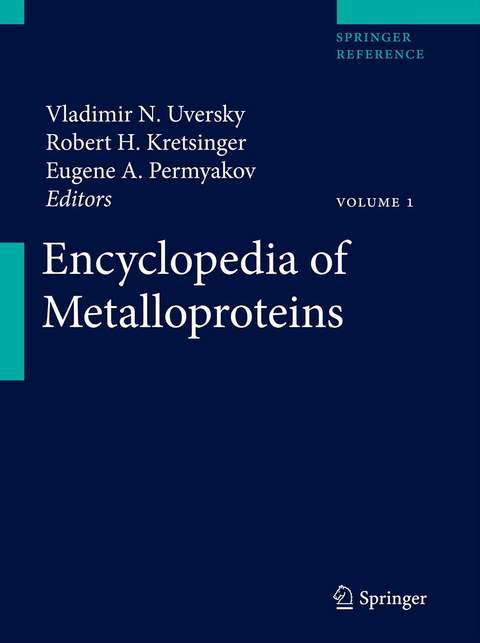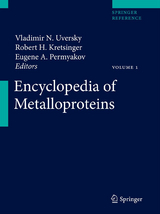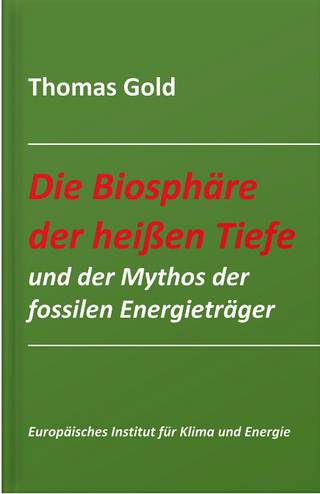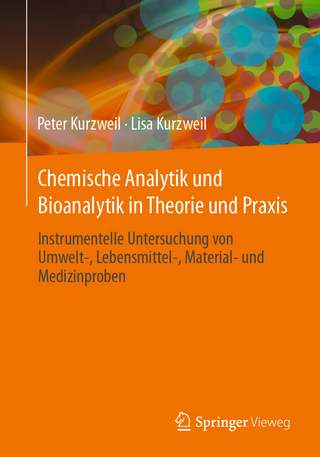Encyclopedia of Metalloproteins
Springer-Verlag New York Inc.
978-1-4614-1532-9 (ISBN)
In biochemistry, a metalloprotein is a generic term for a protein that contains a metal cofactor. The metal may be an isolated ion or may be coordinated with a nonprotein organic compound, such as the porphyrin found in hemoproteins. In some cases, the metal is co-coordinated with a side chain of the protein and an inorganic nonmetallic ion. This kind of protein-metal-nonmetal structure is seen in iron-sulfur clusters
Metalloproteins deals with all aspects related to the intracellular and extracellular metal-binding proteins, including their structures, properties and functions. The biological roles of metal cations and metal-binding proteins are endless. They are involved in all crucial cellular activities. Many pathological conditions are related to the problematic metal metabolism.
Research in metalloprotein-related topics is therefore rapidly growing, and different aspects of metal-binding proteins progressively enter curricula at Universities andeven at the High School level on occasion. However, no key resource providing basic, but comprehensible knowledge on this rapidly expanding field exists. The Encyclopedia of Metalloproteins aims to bridge this gap, and will attempt to cover various aspects of metalloprotein/metalloproteomics and will deal with the different issues related to the intracellular and extracellular metal-binding proteins, including their structures, properties and functions. The goal is to cover exhaustively all catalytically and biologically crucial metal ions and to find at least one interacting protein for other metal ions. The Encyclopedia of Metalloproteins will provide a key resource for advanced undergraduate and graduate students, researchers, instructors, and professors interested in protein science, biochemistry, cell biology, and genetics.
Robert H. Kretsinger is a Professor of Biology at the University of Virginia. He earned is Ph.D. in Biophysics from the Massachusettes Institute of Technology in 1964, and his current research focuses on how to better understand how the genome guides physiology, with specific research interests including protein structure determination, annexin, protein kinase C (PKC), and 3-deoxy-D-arabino-heptulosonate-7-phosphate synthase (DAHPS). Vladimir Uversky earned his Ph.D. in Biophysics from the Moscow Institute of Physics and Technology in 1991, and is currently an Associate Professor in University of South Florida's College of Medicine. His research focuses primarily on the phenomenon of protein intrinsic disorder. Eugene A. Permyakov earned his Ph.D. in Physics and Mathematics at the Moscow Institute of Physics and Technology in 1976. Since then, he has worked at the Institute of Theoretical and Experimental Bio-physics of the Russian Academy of Sciences, and is currently the Director of the Institute for Biological Instrumentation of the Russian Academy of Sciences. Permyakov is best known for his research on metal binding proteins and the intrinsic fluorescence method, with primary research interests focused on the study of physico-chemical and functional properties of metal binding proteins.
Period 2: Lithium, Beryllium.- Period 3: Sodium, Magnesium, Aluminium.- Period 4: Potassium, Calcium, Scandium, Titanium, Vanadium, Chromium, Manganese, Iron, Cobalt, Nickel, Copper, Zinc, Gallium.- Period 5: Rubidium, Strontium, Yttrium, Zirconium, Niobium, Molybdenum, Technetium, Ruthenium, Rhodium, Palladium, Silver, Cadmium, Indium, Tin.- Period 6: Caesium, Barium, Lanthaninds (Lanthanum, Cerium, Praseodymium, Neodymium, Promethium, Samarium, Europium, Gadolinium, Terbium, Dysprosium, Holmium, Erbium, Thulium, Ytterbium), Lutetium, Hafnium, Tantalum, Wolfram, Rhenium, Osmium, Iridium, Platinum, Gold, Mercury, Thallium, Lead, Bismuth.- Period 7: Francium, Radium, Actinides (Actinium, Thorium, Protactinium, Uranium).
| Reihe/Serie | Encyclopedia of Metalloproteins | 1.10 |
|---|---|
| Zusatzinfo | 777 Illustrations, color; 331 Illustrations, black and white; LVII, 2574 p. 1108 illus., 777 illus. in color. In 4 volumes, not available separately. |
| Verlagsort | New York, NY |
| Sprache | englisch |
| Maße | 193 x 260 mm |
| Themenwelt | Naturwissenschaften ► Biologie ► Biochemie |
| Naturwissenschaften ► Biologie ► Mikrobiologie / Immunologie | |
| Naturwissenschaften ► Biologie ► Zellbiologie | |
| ISBN-10 | 1-4614-1532-2 / 1461415322 |
| ISBN-13 | 978-1-4614-1532-9 / 9781461415329 |
| Zustand | Neuware |
| Haben Sie eine Frage zum Produkt? |
aus dem Bereich




